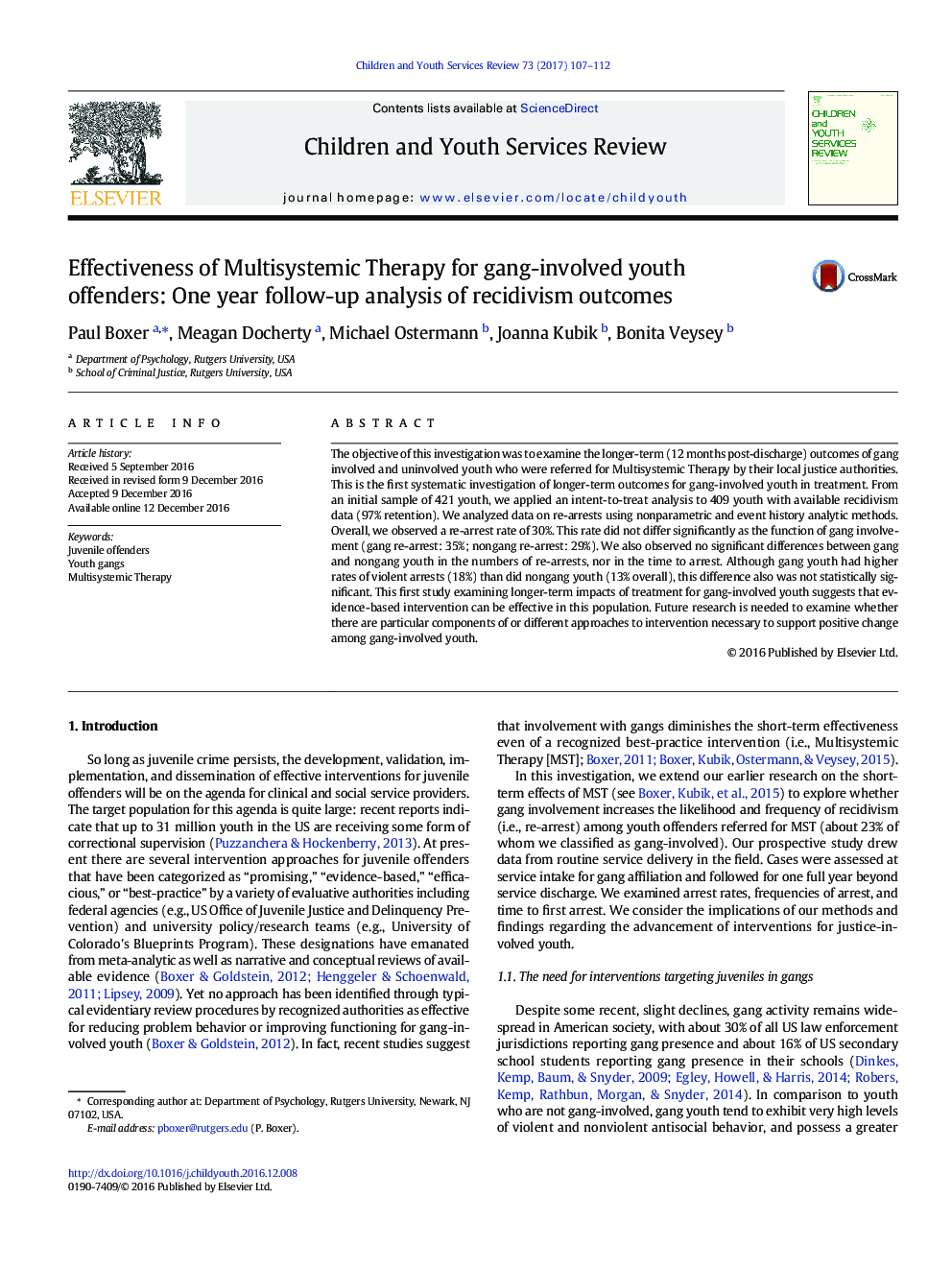| Article ID | Journal | Published Year | Pages | File Type |
|---|---|---|---|---|
| 4936566 | Children and Youth Services Review | 2017 | 6 Pages |
Abstract
The objective of this investigation was to examine the longer-term (12 months post-discharge) outcomes of gang involved and uninvolved youth who were referred for Multisystemic Therapy by their local justice authorities. This is the first systematic investigation of longer-term outcomes for gang-involved youth in treatment. From an initial sample of 421 youth, we applied an intent-to-treat analysis to 409 youth with available recidivism data (97% retention). We analyzed data on re-arrests using nonparametric and event history analytic methods. Overall, we observed a re-arrest rate of 30%. This rate did not differ significantly as the function of gang involvement (gang re-arrest: 35%; nongang re-arrest: 29%). We also observed no significant differences between gang and nongang youth in the numbers of re-arrests, nor in the time to arrest. Although gang youth had higher rates of violent arrests (18%) than did nongang youth (13% overall), this difference also was not statistically significant. This first study examining longer-term impacts of treatment for gang-involved youth suggests that evidence-based intervention can be effective in this population. Future research is needed to examine whether there are particular components of or different approaches to intervention necessary to support positive change among gang-involved youth.
Related Topics
Health Sciences
Medicine and Dentistry
Perinatology, Pediatrics and Child Health
Authors
Paul Boxer, Meagan Docherty, Michael Ostermann, Joanna Kubik, Bonita Veysey,
